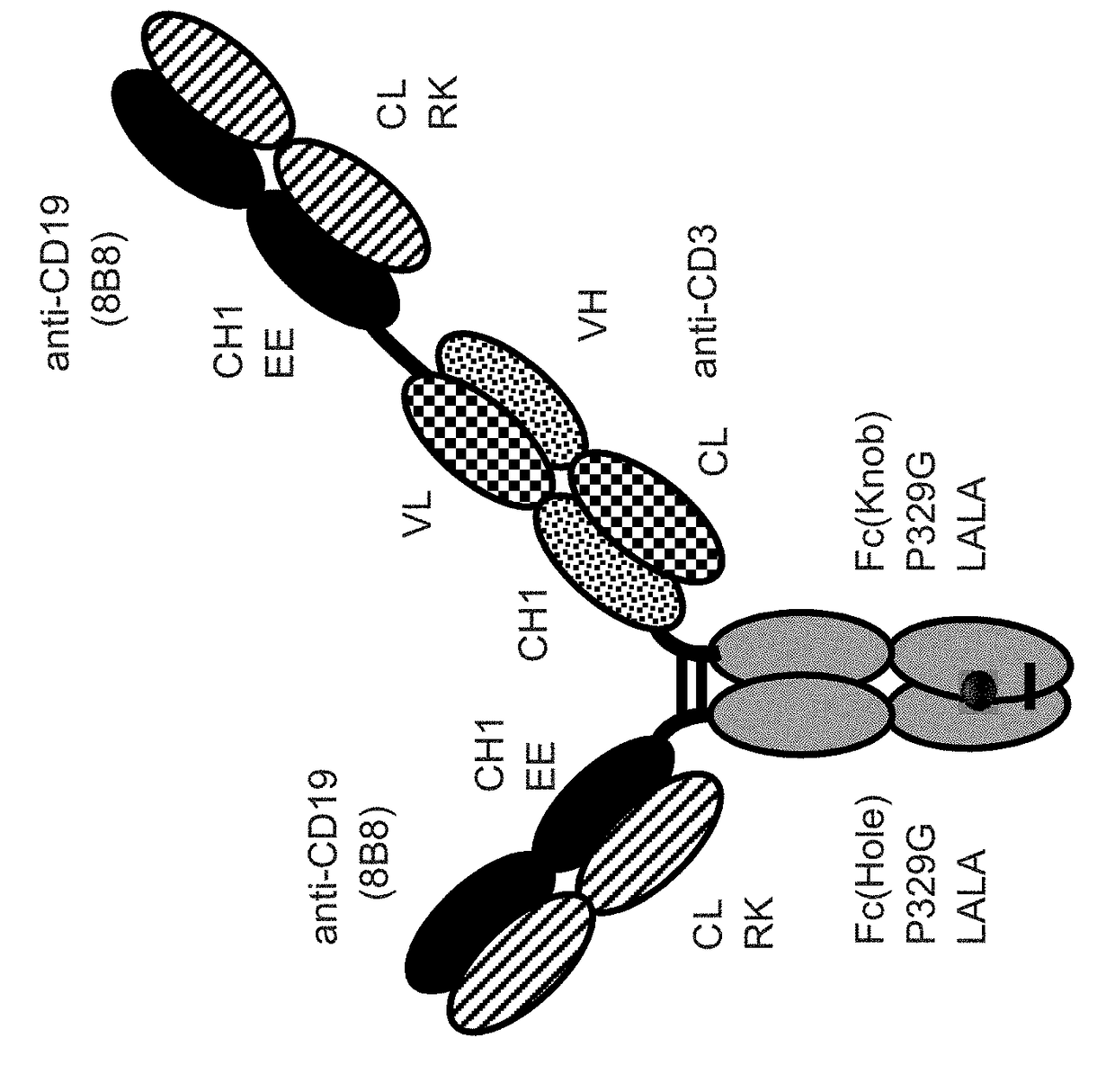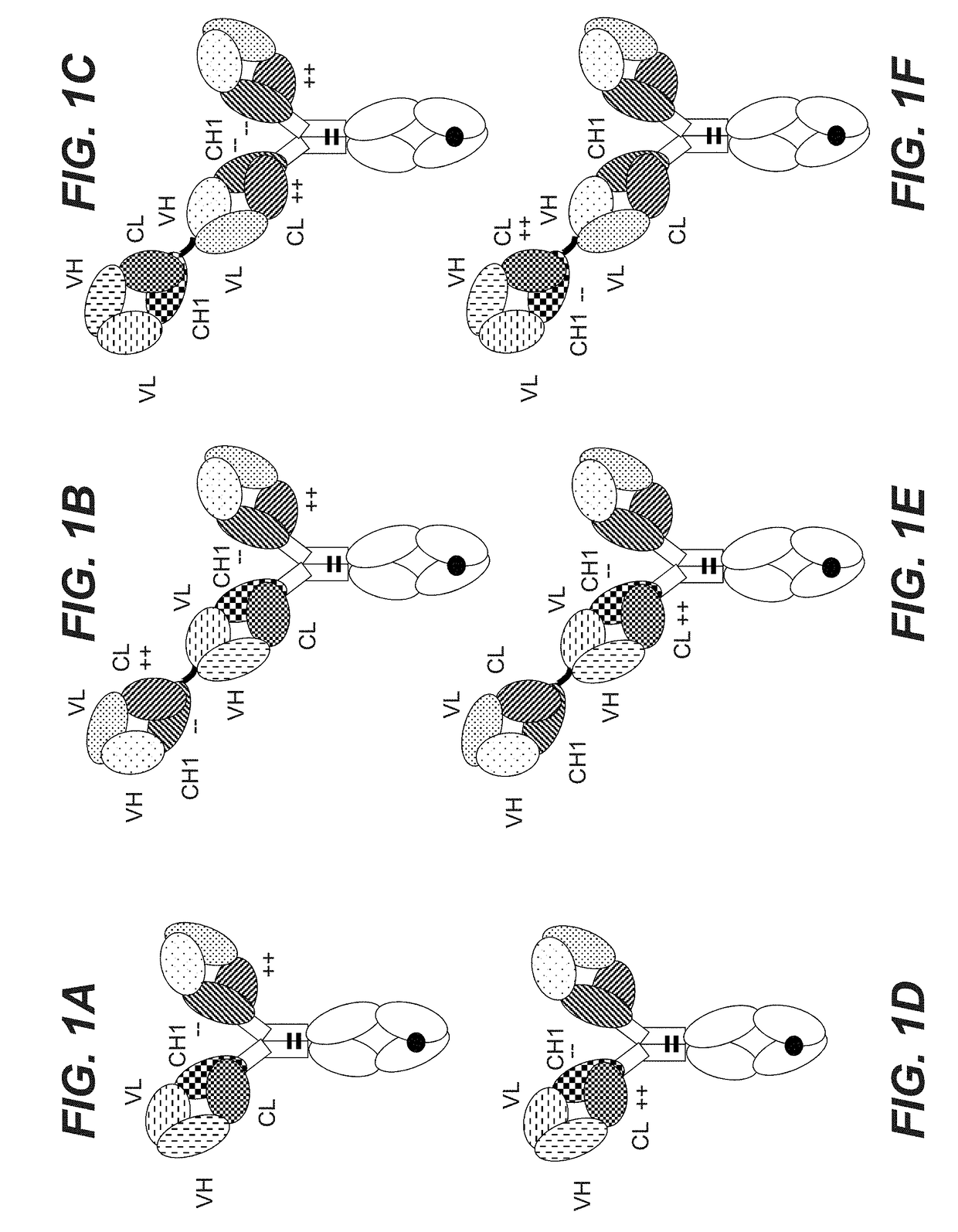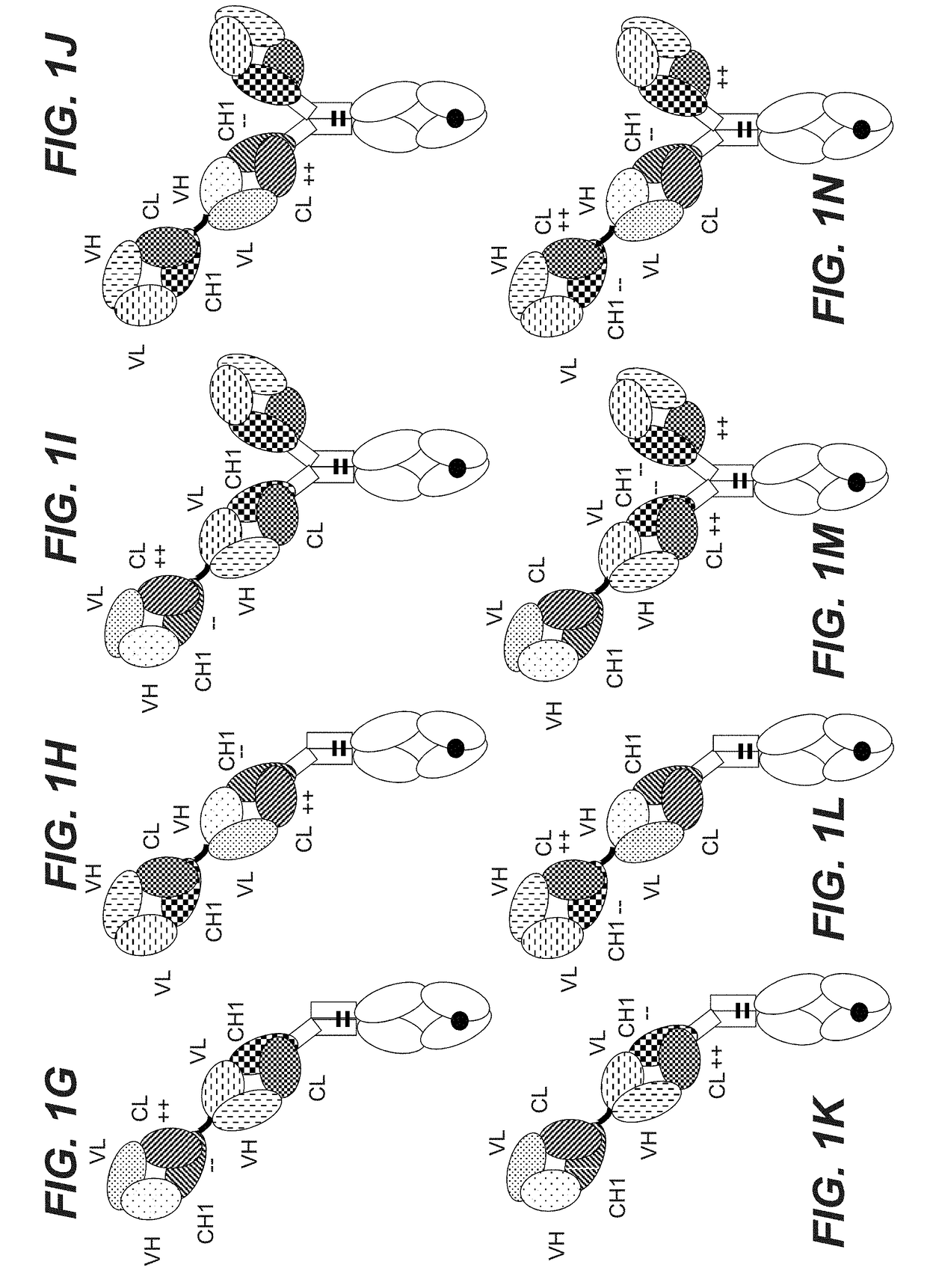Bispecific t cell activating antigen binding molecules
a technology of binding molecules and t cells, applied in the direction of immunoglobulins, peptides, drug compositions, etc., can solve the problems of igg-like formats, unable to activate the effector mechanism mediated by the fc domain, and suffer from the toxicity of the native effector functions inherent in igg molecules,
- Summary
- Abstract
- Description
- Claims
- Application Information
AI Technical Summary
Benefits of technology
Problems solved by technology
Method used
Image
Examples
examples
[0442]The following are examples of methods and compositions of the invention. It is understood that various other embodiments may be practiced, given the general description provided above.
[0443]General Methods
[0444]Recombinant DNA Techniques
[0445]Standard methods were used to manipulate DNA as described in Sambrook et al., Molecular cloning: A laboratory manual; Cold Spring Harbor Laboratory Press, Cold Spring Harbor, N.Y., 1989. The molecular biological reagents were used according to the manufacturers' instructions. General information regarding the nucleotide sequences of human immunoglobulins light and heavy chains is given in: Kabat, E. A. et al., (1991) Sequences of Proteins of Immunological Interest, 5th ed., NIH Publication No. 91-3242.
[0446]DNA Sequencing
[0447]DNA sequences were determined by double strand sequencing.
[0448]Gene Synthesis
[0449]Desired gene segments where required were either generated by PCR using appropriate templates or were synthesized by Geneart AG (Re...
PUM
| Property | Measurement | Unit |
|---|---|---|
| dissociation constant | aaaaa | aaaaa |
| dissociation constant | aaaaa | aaaaa |
| dissociation constant | aaaaa | aaaaa |
Abstract
Description
Claims
Application Information
 Login to View More
Login to View More - R&D
- Intellectual Property
- Life Sciences
- Materials
- Tech Scout
- Unparalleled Data Quality
- Higher Quality Content
- 60% Fewer Hallucinations
Browse by: Latest US Patents, China's latest patents, Technical Efficacy Thesaurus, Application Domain, Technology Topic, Popular Technical Reports.
© 2025 PatSnap. All rights reserved.Legal|Privacy policy|Modern Slavery Act Transparency Statement|Sitemap|About US| Contact US: help@patsnap.com



